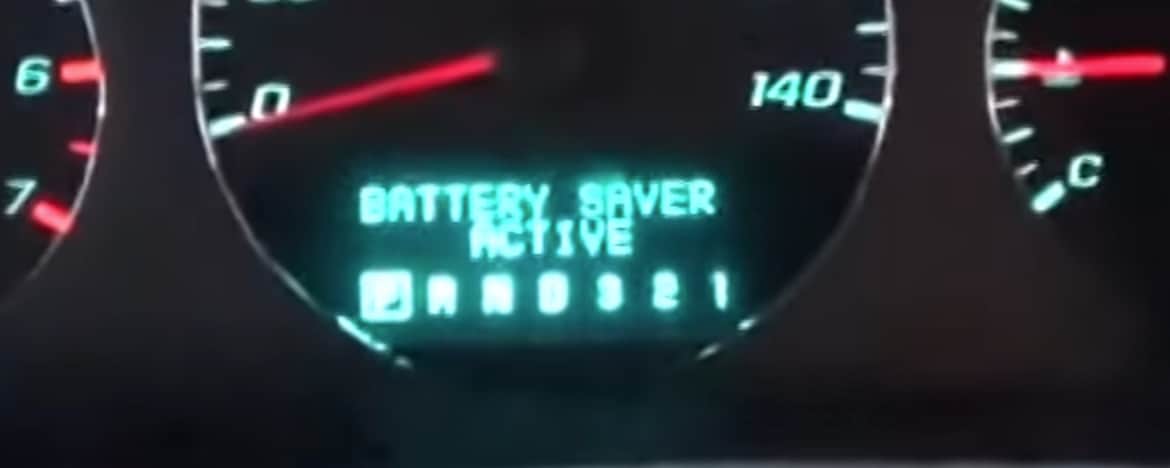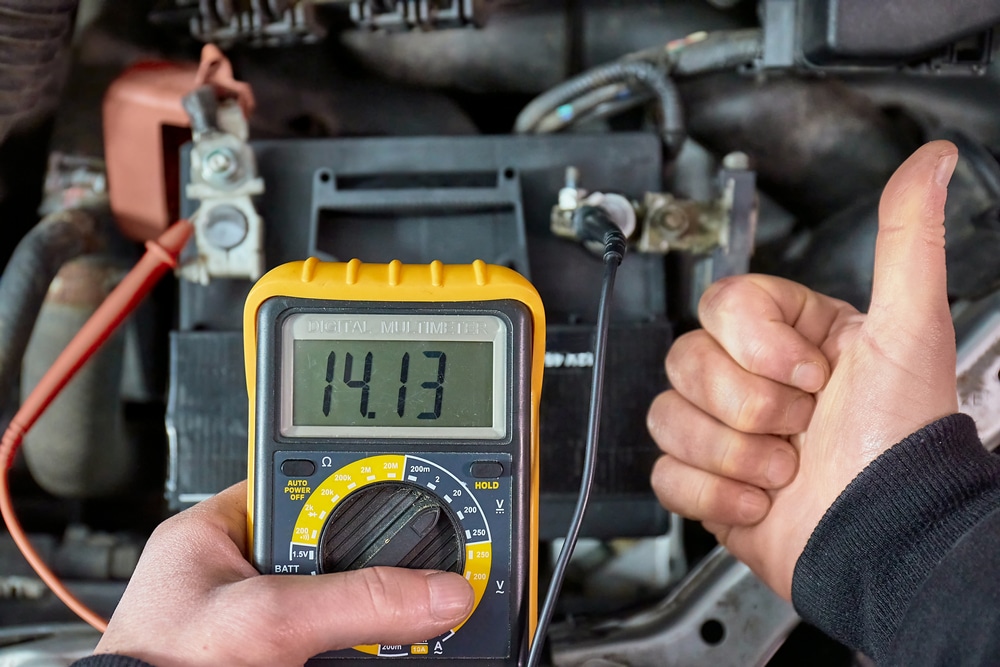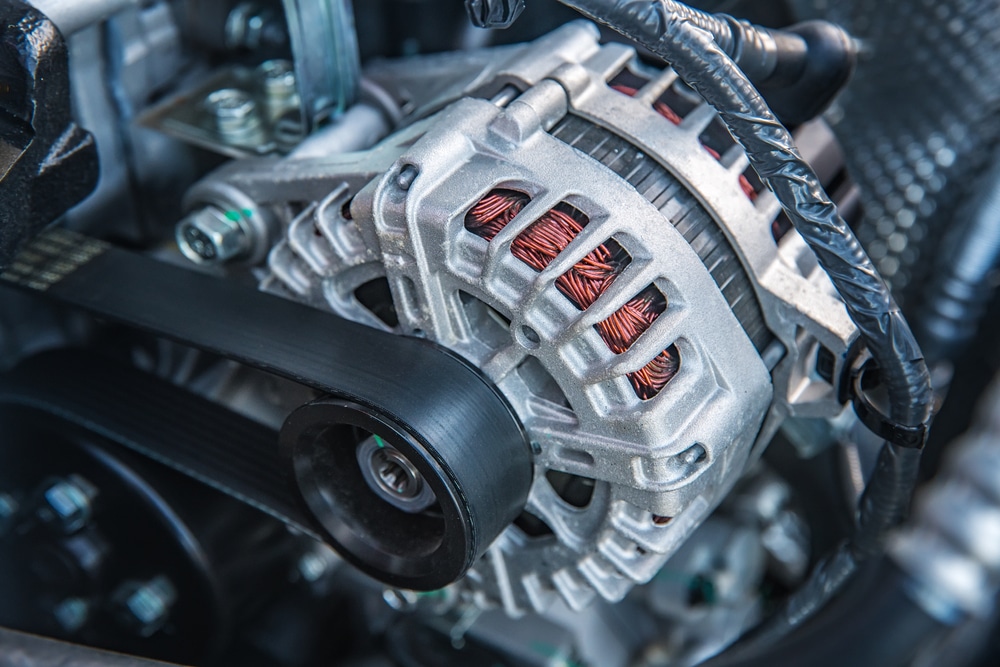
Many modern GM made vehicles have a battery saver feature, this includes the GMC Acadia.
If you are getting a “battery saver active” message, it means that your Acadia’s electrical system voltage has dropped to a critical level (less than 11.7 volts).
Typical electrical systems run at 13+ volts with the engine running. The battery should also be over 12 volts even with the vehicle sitting.
The battery saver increases the driving range of your Acadia when the system is not properly charging.
If this feature is on, assume that your vehicle will stop running and get it fixed immediately.
Table of Contents
Quick Help Table
| Symptom | Diagnosis |
|---|---|
| “Battery Saver Active” warning message appears | The vehicle’s battery may be running low, or there may be an issue with the battery charging system, such as a malfunctioning alternator |
| Dim or flickering headlights | If the battery is running low, it may affect the vehicle’s electrical system, resulting in dim or flickering headlights |
| Slow or difficult engine starting | A failing battery may result in slow or difficult engine starting, or the engine may not start at all |
| Electrical accessories not working properly | If the battery is running low, it may affect the vehicle’s electrical accessories, such as the radio, power windows, or climate control system |
| Check engine light is on | If the check engine light is on, there may be an issue with the engine’s control module, which can affect the battery charging system |
Battery Saver Active Causes: GMC Acadia

The battery saver is usually activated when an alternator goes bad, but there can be other causes as well.
Battery Cable
Before jumping straight to the alternator or battery, it’s a good idea to take a look at the battery posts.
If they look corroded, clean them off with a wire brush.
There are also specialized battery cleaning tools that you can pick up at Autozone or Wal-Mart for around $5.
Bad Alternator
If the battery saver light came on when you were already driving, that is a strong indicator that the alternator is bad. With the engine running, the alternator should be putting out at least 13.5 volts.
It’s very easy to see if the alternator is bad. You need a voltage meter, that’s about it.
The alternator could be all the way bad (not charging the battery at all).
Or it can be going bad, which means that it is charging some, but not enough to meet the needs of the vehicle. Here’s a great video from ChrisFix on how to test the alternator yourself.
Bad Battery
If the alternator appears to be fine from your testing (and the battery cables are clean) that leaves the battery and battery current sensor.
It would still be wise to have the battery tested before it is replaced. It could still be the battery current sensor that is at fault. Here’s more on a bad battery.
Battery Current Sensor
This sensor determines whether or not current is flowing in or out of your Acadia’s battery.
It is connected to the negative battery terminal. Here’s a great video on how to diagnose a bad battery sensor.
Diagnosis
How to Test Your Acadia’s Battery
- Turn off your GMC Acadia’s engine and allow the battery to cool for a few minutes.
- Using a multimeter, measure the battery voltage. A healthy battery should have a voltage of over 12 volts when the vehicle is sitting.
- To check the battery’s performance under load, start the engine and check the voltage again. A normal electrical system voltage should be 13+ volts with the engine running.
- If the voltage is low during these tests, it may indicate a weak or faulty battery.
Start By Inspecting the Battery Posts and Terminals
- Clean any visible corrosion or dirt from battery posts and terminals.
- Ensure that the battery terminals are securely attached and tightened.
- Check the battery cable connections for any signs of wear or damage.
How to Tell if the Alternator is Bad
- With your GMC Acadia’s engine running, use a multimeter to measure the voltage at the battery terminals. The voltage should be between 13.5 and 14.5 volts.
- Turn on electrical accessories (e.g., headlights, A/C, and radio) and observe the voltage. The voltage should remain within the acceptable range (13.5 – 14.5 volts).
- If the voltage drops significantly, it may indicate that the alternator is not providing enough power to keep up with the vehicle’s electrical demands.
By following these steps in diagnosing your GMC Acadia’s “battery saver active” issue, you can help determine the cause and find a suitable solution.
Conclusion: Acadia Battery Saver Diagnosis
The “battery saver active” notification in a GMC Acadia indicates an issue with the charging system, which can result from:
- Insufficient voltage storage in the battery
- Alternator not generating enough voltage
- Voltage loss due to bad cables or corroded terminals
Addressing these issues will help resolve the problem and ensure a properly functioning charging system.



